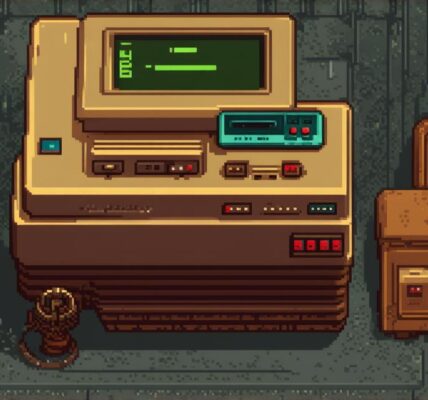Introduction:
The world of video game design is a vast and exciting field, with endless opportunities for creativity and innovation. If you’re passionate about creating immersive and engaging games, then becoming a video game designer may be the perfect career path for you. However, this is no easy feat, as it requires a combination of artistic and technical skills, as well as a deep understanding of player psychology and behavior. In this article, we will take a closer look at the steps involved in becoming a video game designer and explore what it takes to succeed in this highly competitive field.
Step 1: Pursue Your Passion for Video Games
Before you embark on your journey to become a video game designer, it’s important to have a strong passion for gaming. This passion should not only be fueled by playing games but also by studying and analyzing them. Start by identifying the type of games that resonate with you, whether it’s action-adventure, role-playing, strategy, or puzzle games. Then, try to understand what makes these games engaging and fun, as well as what could be improved upon.
Step 2: Build Your Skills and Experience
Once you have identified your passion for video games, the next step is to build your skills and experience in the field of game design. This can involve a combination of formal education and hands-on experience. Some options include:
- Enrolling in a bachelor’s or master’s degree program in game design or a related field.
- Participating in online courses, tutorials, and workshops that cover topics such as game development tools, scripting languages, and user interface design.
- Volunteering your time to help with open-source game development projects or contributing to online gaming communities.
- Gaining work experience through internships, freelance work, or entry-level positions in the industry.
Step 3: Develop Your Portfolio
As you gain experience and build your skills, it’s important to develop a strong portfolio that showcases your work and demonstrates your abilities as a game designer. Your portfolio can include a variety of elements such as:
- Game prototypes or demos that you have created.
- Concept art and sketches that illustrate your design ideas.
- Technical documentation, such as code snippets or script examples, to demonstrate your programming skills.
- User feedback and reviews from previous projects.
Step 4: Build Your Network
Networking is a crucial part of becoming a successful video game designer. Attend conferences, meetups, and other industry events to connect with other professionals in the field. Join online gaming communities and participate in forums and discussion boards to share your work and gain valuable feedback from others.
Step 5: Stay Up-to-Date on Industry Trends
The video game design industry is constantly evolving, with new technologies and trends emerging all the time. It’s important to stay up-to-date on these developments in order to remain competitive in the job market. This can involve reading industry publications, attending trade shows, and participating in online forums and communities.
Summary:
Becoming a video game designer is a challenging but rewarding career path that requires a combination of artistic and technical skills, as well as a deep understanding of player psychology and behavior. By pursuing your passion for gaming, building your skills and experience, developing a strong portfolio, building your network, and staying up-to-date on industry trends, you can position yourself for success in this exciting field. With hard work and dedication, you could be creating the next big hit game!
FAQs:
1. What education or skills are required to become a video game designer?

While there is no one specific education or skillset required to become a video game designer, many professionals in the field have a bachelor’s or master’s degree in game design or a related field. Additionally, strong programming and scripting skills, as well as experience with game development tools, are highly valued.
2. Is there a demand for video game designers?
Yes, the demand for video game designers is high, with many companies seeking talented professionals to create engaging and innovative games. According to the Bureau of Labor Statistics, employment of software developers, including video game designers, is projected to grow 22% from 2019 to 2029, much faster than the average for all occupations.
3. How long does it take to become a video game designer?
The time it takes to become a video game designer can vary depending on your level of education and experience. Some individuals may enter the field with little to no formal training and work their way up through entry-level positions, while others may pursue advanced degrees or extensive training before entering the workforce.




